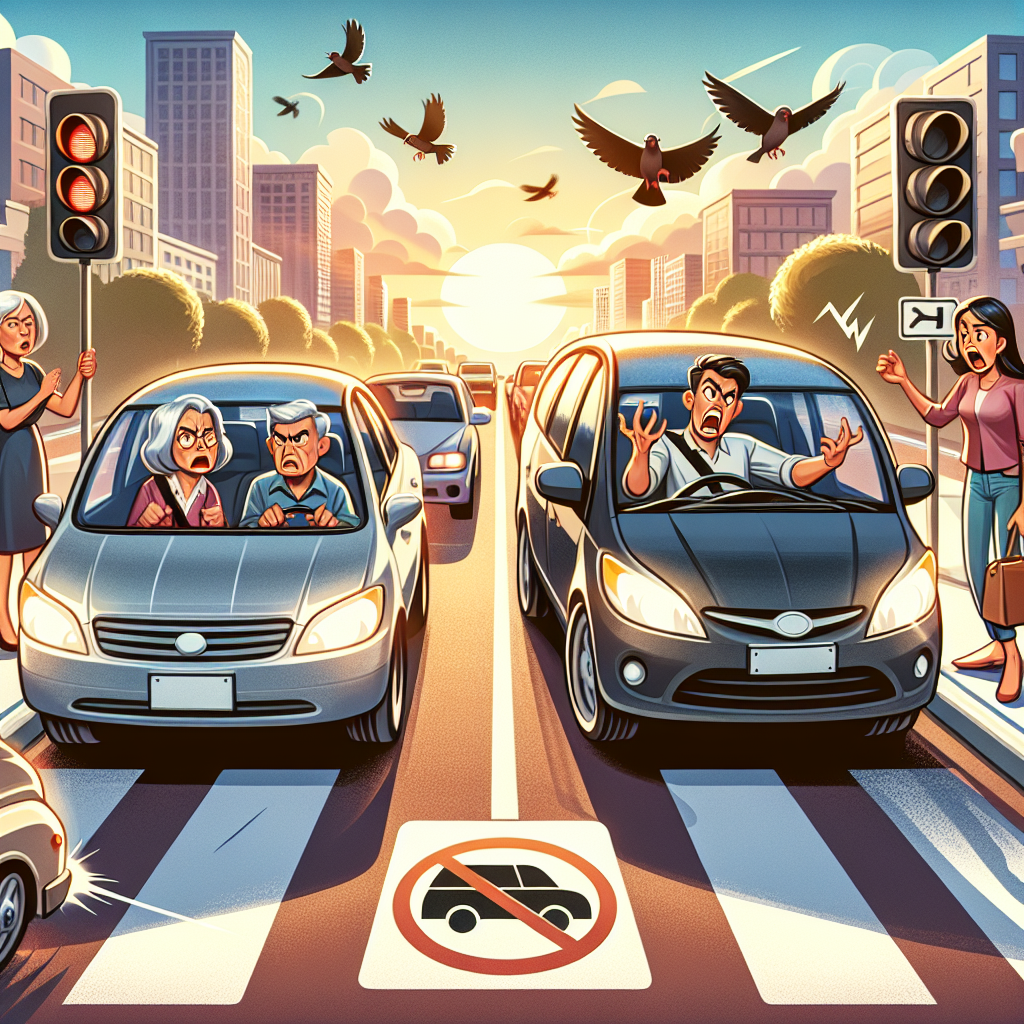-
Table of Contents
The Dangers of Road Rage

Driving can be a stressful experience, especially in congested cities or during rush hour. The frustration and impatience that can arise from being stuck in traffic or dealing with inconsiderate drivers can sometimes lead to a phenomenon known as road rage. Road rage refers to aggressive or violent behavior exhibited by drivers on the road. It can have serious consequences, not only for the individuals involved but also for innocent bystanders. In this article, we will explore the dangers of road rage, its causes, and potential solutions.
Understanding Road Rage
Road rage is a complex issue that can manifest in various ways. It can range from verbal insults and obscene gestures to physical altercations and even vehicular assault. According to a study conducted by the AAA Foundation for Traffic Safety, nearly 80% of drivers expressed significant anger, aggression, or road rage at least once in the past 30 days. This alarming statistic highlights the prevalence of this issue and the need for greater awareness and understanding.
Causes of Road Rage
Road rage can be triggered by a variety of factors, including:
- Traffic congestion: Being stuck in traffic for extended periods can lead to frustration and impatience, increasing the likelihood of aggressive behavior.
- Aggressive driving: When drivers engage in aggressive behaviors such as tailgating, cutting off other drivers, or excessive speeding, it can escalate tensions on the road.
- Disregard for traffic rules: Drivers who consistently ignore traffic rules, such as running red lights or failing to yield, can provoke anger and frustration in others.
- Personal stress: Individuals who are already dealing with high levels of stress or anger in their personal lives may be more prone to exhibiting road rage.
The Consequences of Road Rage
Road rage can have severe consequences for both the aggressor and the victim. Some of the potential outcomes include:
- Physical harm: Road rage incidents can escalate quickly, leading to physical altercations or even vehicular assault. These confrontations can result in serious injuries or even fatalities.
- Legal consequences: Engaging in aggressive or violent behavior on the road can lead to criminal charges, including assault, reckless driving, or even manslaughter.
- Psychological impact: Experiencing or witnessing road rage can have long-lasting psychological effects, such as anxiety, post-traumatic stress disorder (PTSD), or a fear of driving.
- Increased risk of accidents: Road rage can impair judgment and decision-making, increasing the likelihood of accidents. Aggressive driving behaviors, such as tailgating or sudden lane changes, can also create dangerous situations on the road.
Case Studies and Statistics
Several high-profile cases have highlighted the dangers of road rage. One such case involved a driver in California who shot and killed another motorist after a minor collision. The incident shocked the nation and served as a stark reminder of the potential consequences of road rage.
Statistics also paint a grim picture of the impact of road rage:
- According to Everytown Research & Policy, a person is shot or killed, on average, every 16 hours based on road rage gun violence statistics in 2022.
- According to the National Highway Traffic Safety Administration (NHTSA), aggressive driving behaviors, including road rage, are a factor in more than half of all fatal crashes.
- A study conducted by the American Journal of Public Health found that firearms were involved in 37% of road rage incidents.
Preventing Road Rage
While it may not be possible to eliminate road rage entirely, there are steps that individuals and society can take to mitigate its occurrence:
- Practice patience: Accept that traffic is an inevitable part of driving and try to remain calm and patient. Listening to calming music or engaging in deep breathing exercises can help reduce stress levels.
- Be courteous: Show respect and consideration for other drivers on the road. Use turn signals, yield when necessary, and avoid tailgating or cutting off other vehicles.
- Avoid confrontation: If you encounter an aggressive driver, do not engage or retaliate. Instead, distance yourself from the situation by changing lanes or taking an alternate route.
- Report aggressive behavior: If you witness dangerous or aggressive driving, report it to the appropriate authorities. Providing a description of the vehicle and license plate number can help law enforcement take appropriate action.
- Education and awareness: Promote education and awareness campaigns to highlight the dangers of road rage. This can include public service announcements, driver education programs, and community initiatives.
Conclusion
Road rage is a serious issue that poses significant risks to individuals and society as a whole. Understanding the causes and consequences of road rage is crucial in addressing this problem effectively. By practicing patience, showing courtesy, and promoting education and awareness, we can work towards creating safer roads for everyone. Remember, it is always better to arrive late than to never arrive at all.



